My son hates the sight of blood, but he loves slime! So to teach him the components of blood, we are going to make a 3D blood slime model!
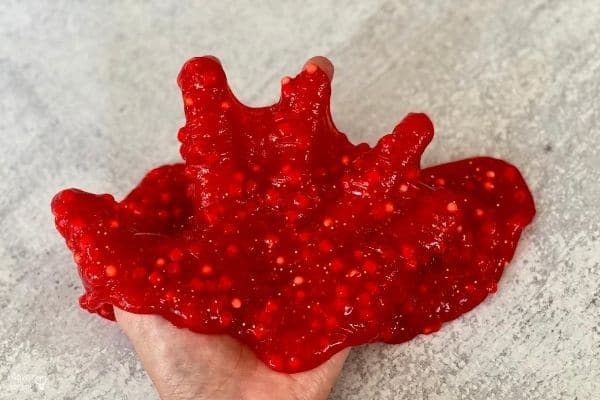
This fun blood cell model science activity is a great way to introduce the parts of blood to grade school kids. Plus, it makes a gross and icky sensory experience!
And if you are diving into the human anatomy lesson in the fall, this blood slime model also makes a great Halloween activity!
How to Make Blood Slime Model
Materials:
- Red Perler beads (red blood cells)
- Microfoam balls (white blood cells)
- Gold glitter (platelets)
- ½ cup of Elmer’s Clear Liquid School Glue
- 1-2 tablespoon saline solution (with boric acid and sodium borate)
- ½ cup of water
- ½ teaspoon baking soda
- Optional: Red food coloring
- Bowl
- Measuring cups and spoons
- Large popsicle stick
Instructions:
1. Pour ½ cup clear liquid school glue in a bowl.
2. Dissolve ½ teaspoon baking soda in ½ cup warm water in a separate container.
3. Pour the baking soda solution into the bowl and stir it into the glue with the large popsicle stick.
4. Add the red Perler beads, microfoam balls, and glitter to the mixture.
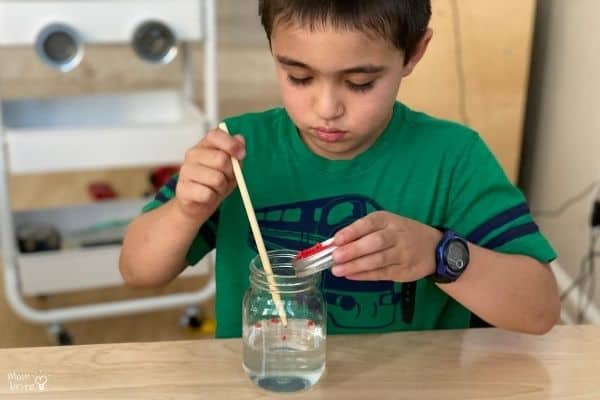
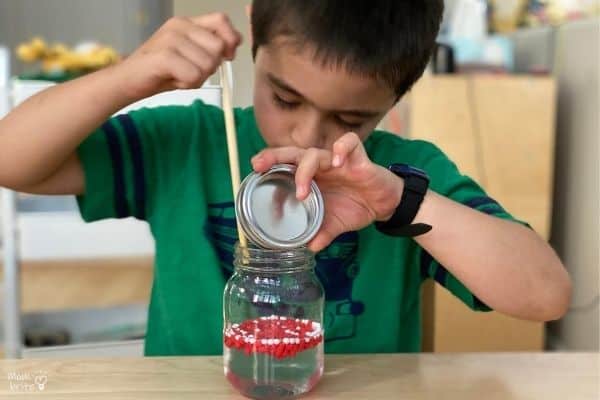
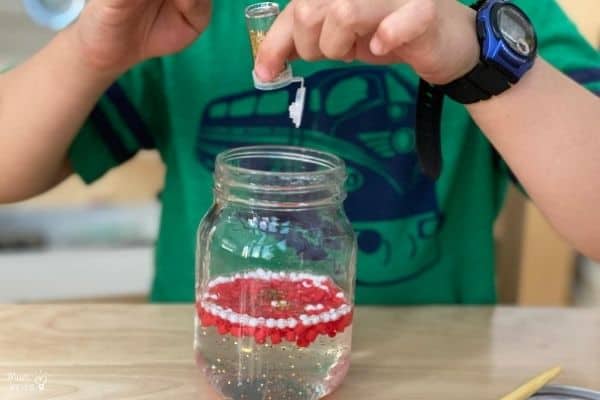
5. Add 1 tablespoon of saline solution.
6. Mix quickly until the slime pulls away from the side and bottom of the bowl. If the slime is sticking to the bowl, slowly add a drop or two of saline solution and mix until the slime no longer sticks to the bowl. Careful not to add too much saline solution or else your slime might get too firm.
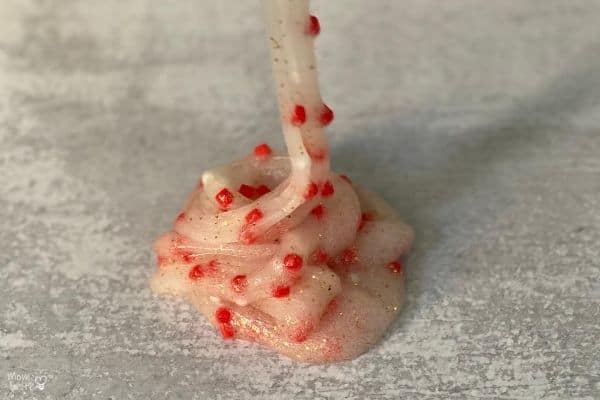
7. Knead the slime with your hands for a few minutes until it reaches the desired consistency.
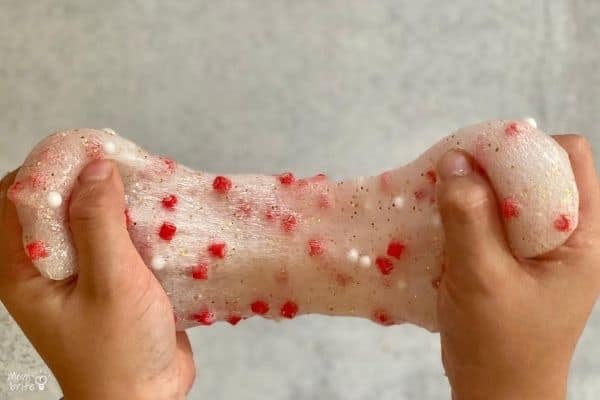
8. Optional: Add red food coloring if you want to make the slime look like blood!
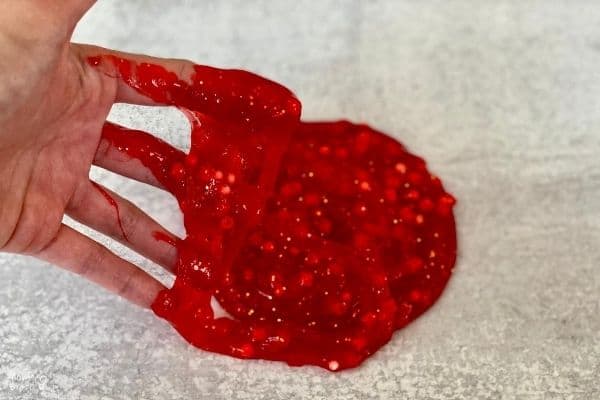
I didn’t give you the exact amounts of Perler beads, styrofoam balls, and glitter we used because we didn’t measure them. However, we did add more or less of certain components to represent the ratio of the red blood cells, white blood cells, and platelets we have in our blood.
Since most of the blood volume consists of red blood cells, we added a lot of red Perler beads. Then we added about a dozen of the microfoam balls since white blood cells are only a small portion of our blood. And lastly, we just sprinkled gold glitter, or platelets, until we can see them clearly in the slime.
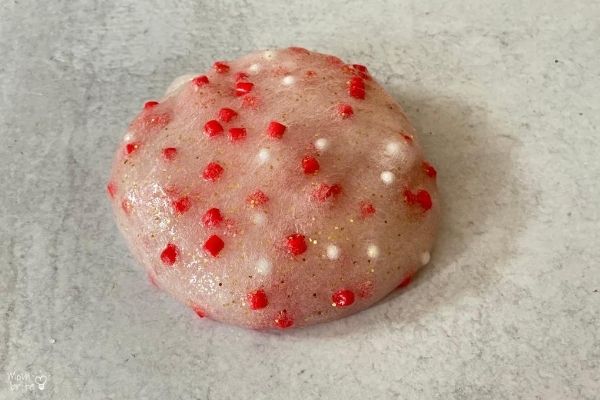
The clear slime allowed us to see the blood components clearly, and the kids had a lot of fun playing with it. However, it just didn’t look like blood until we added red food coloring. Then it looks a little too much like blood! I will definitely keep this blood slime idea in mind when Halloween comes around.
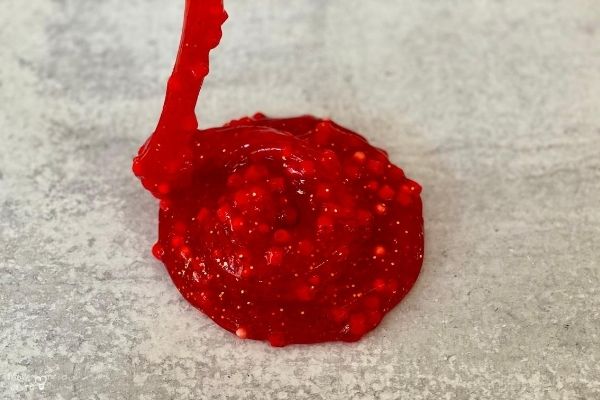
What is Our Blood?
To most of us, blood is what comes out of our body when we get a cut. We clean out wounds, bandage it, and hope the bleeding stoops sooner than later. But what exactly is this red fluid coming out of our body?
Blood consists of 4 main components:
Red blood cells:
The red cells, or erythrocytes, make up about 40-45% of your blood volume. Due to the abundance of red blood cells in your blood, which get their color from a special protein called hemoglobin, your blood appears red.
Red blood cells are produced in the bone marrow. They carry oxygen from the lungs to the rest of the body and then returns carbon dioxide from the body to the lungs.
White blood cells:
The white blood cells, or leukocytes, make up about 1% of your blood. They help defend your body against infection and disease. Similar to red blood cells, they are generated from your bone marrow.
Platelets:
Platelets, unlike red and white blood cells, are not complete cells but small fragments of cells. Their main role is helping your blood clot and control bleeding whenever you incur a wound.
Plasma:
Plasma is the liquid component of your blood. It’s a mixture of water, sugar, fat, protein, and salts. The plasma helps transport water, nutrients, waste products, proteins, and blood cells to your body’s tissues.
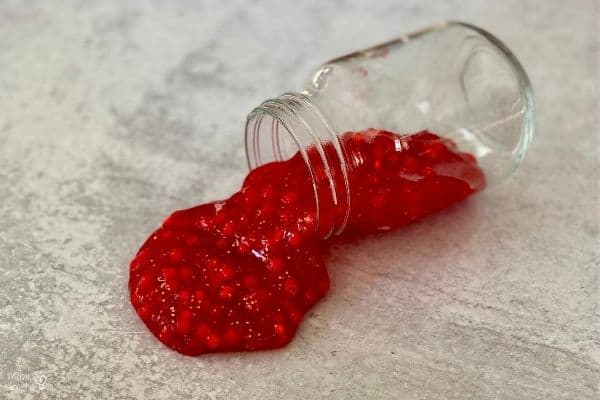
For more human anatomy activities that also double as Halloween activities, check out how to make Q-tip skeletons.
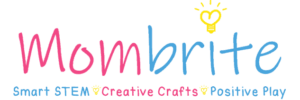
Thank you so much for so many human body related activities. I love all the activities and going to try almost all. Plus, the detail description of how blood, lungs etc work is amazing. Even I learn so much about it. Lots of ❤️ ❤.
Aw thank you for reading my blog!
I do not have red perler beads. Can I use something else like red cookie decorations sprinkles?
yes you can definitely use anything else red! The only thing with sprinkles is that the food coloring might come off and stain your hands, but people do use sprinkles all the time in slime!
How long would the slime be good for if I made it in advance and kept it in like a tupperware container? Thinking of for school STEM nights?
Slime should be good for several days if you keep it in an airtight container!
wow. I love this